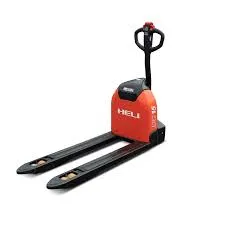


Understanding the Working Principle of Chain Hoists
Chain hoists are essential tools in various industrial and construction applications, providing a reliable means for lifting heavy loads with minimal effort. They leverage a simple yet effective mechanical principle to operate, making them a staple in settings ranging from warehouses and manufacturing plants to theaters and construction sites. In this article, we will delve into the working principles of chain hoists, exploring their construction, functionality, and applications.
Construction of Chain Hoists
A typical chain hoist consists of several key components a hoist body, a chain, a hook, and a lifting mechanism. The hoist body houses the gears and the braking system, which are crucial for lifting and controlling the load. The chain, often made from high-strength steel, is the primary component that engages with the load. It loops through a series of pulleys contained within the hoist body, allowing for smooth operation. The hook serves as the connection point for the load being lifted.
Working Principle
The working principle of a chain hoist is based on mechanical advantage and the conversion of energy. When operated, the user pulls on the free end of the chain, which is connected to the lifting mechanism inside the hoist body. This action rotates the gears, which in turn moves the chain in a loop. As the chain is pulled, it coils onto a drum or sprocket, lifting the attached load upward.
The key aspect of this operation is the mechanical advantage offered by the gear system. By using a ratio of gears, the force applied by the user is amplified. This means that a relatively small amount of effort can lift a considerably heavier load, making it an efficient lifting solution. Furthermore, the integrated braking system ensures that the load remains secure when lifted, preventing accidental drops.
Load Control and Safety Features

It is crucial to highlight that chain hoists are designed with safety in mind. Many models come equipped with safety features such as overload protection, which shuts off the hoist if the load exceeds its rated capacity. Additionally, the hoist’s braking mechanism is typically designed to hold the load securely in place, allowing for precise control during operation.
The user can operate the hoist either manually or electrically. Manual chain hoists, often referred to as block and tackle systems, require the user to pull the chain directly to lift the load. In contrast, electric chain hoists utilize an electric motor to automatically lift and lower loads, offering enhanced convenience and efficiency, especially for frequent or heavy lifting tasks.
Applications of Chain Hoists
The versatility of chain hoists makes them applicable in a wide range of industries. In construction, they are used to lift building materials, tools, and equipment to various heights. In manufacturing, chain hoists assist in assembling heavy machinery and transporting goods on the production floor. Additionally, in theatrical productions, chain hoists are employed to manipulate stage scenery and lighting fixtures.
The ease of use, combined with the ability to lift heavy loads safely, underscores the importance of chain hoists in modern operations. Their straightforward design and robust nature ensure that they can withstand the rigors of frequent use in demanding environments.
Conclusion
In summary, chain hoists operate on a simple yet powerful principle of mechanical advantage, enabling users to lift heavy loads with ease. Their construction, featuring high-strength chains and effective braking systems, ensures both functionality and safety. With a wide range of applications across various industries, chain hoists remain an indispensable tool for enhancing efficiency and productivity in lifting tasks. Understanding the working principles behind these devices highlights their significance and informs users about their effective and safe operation.



